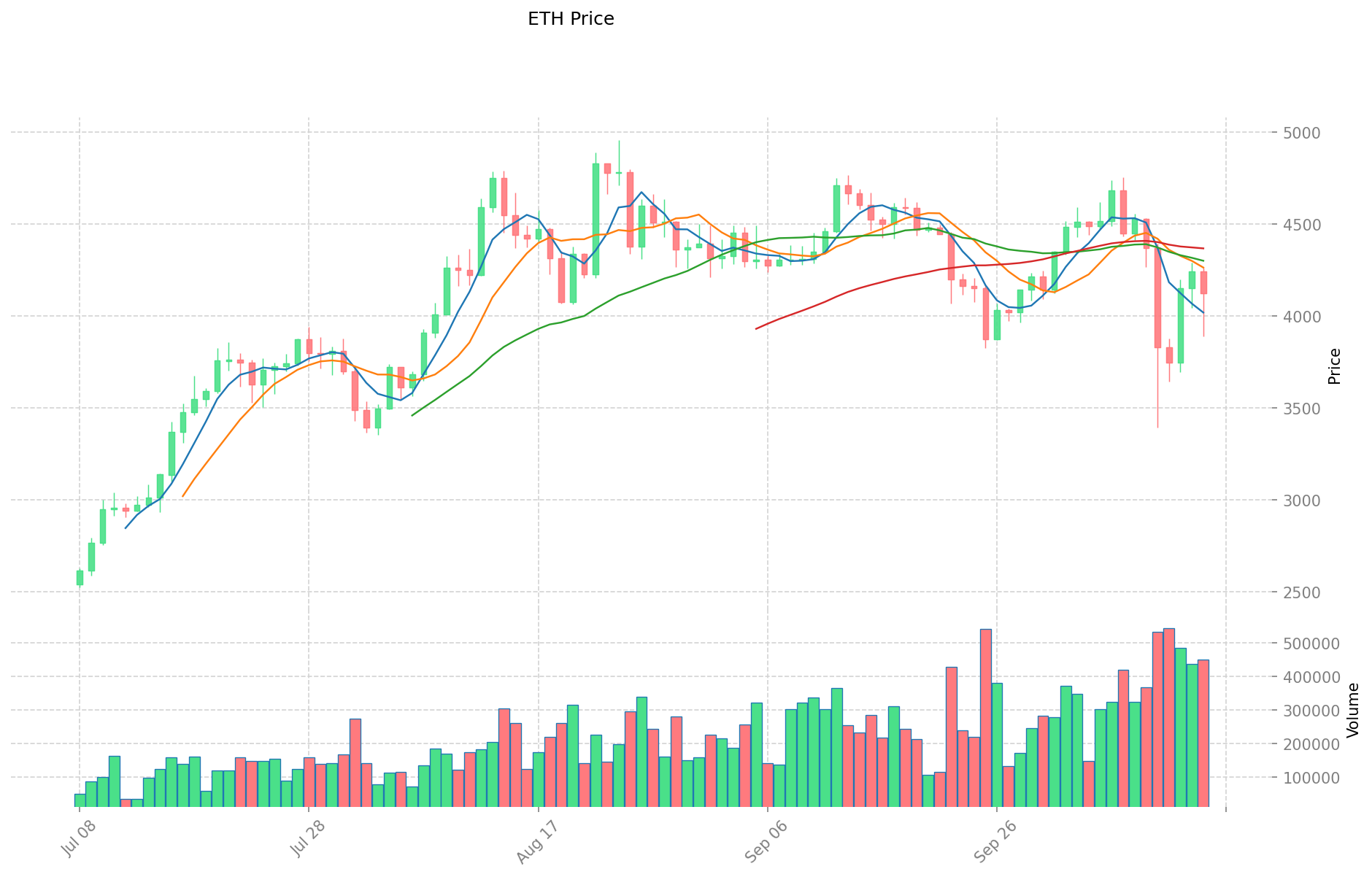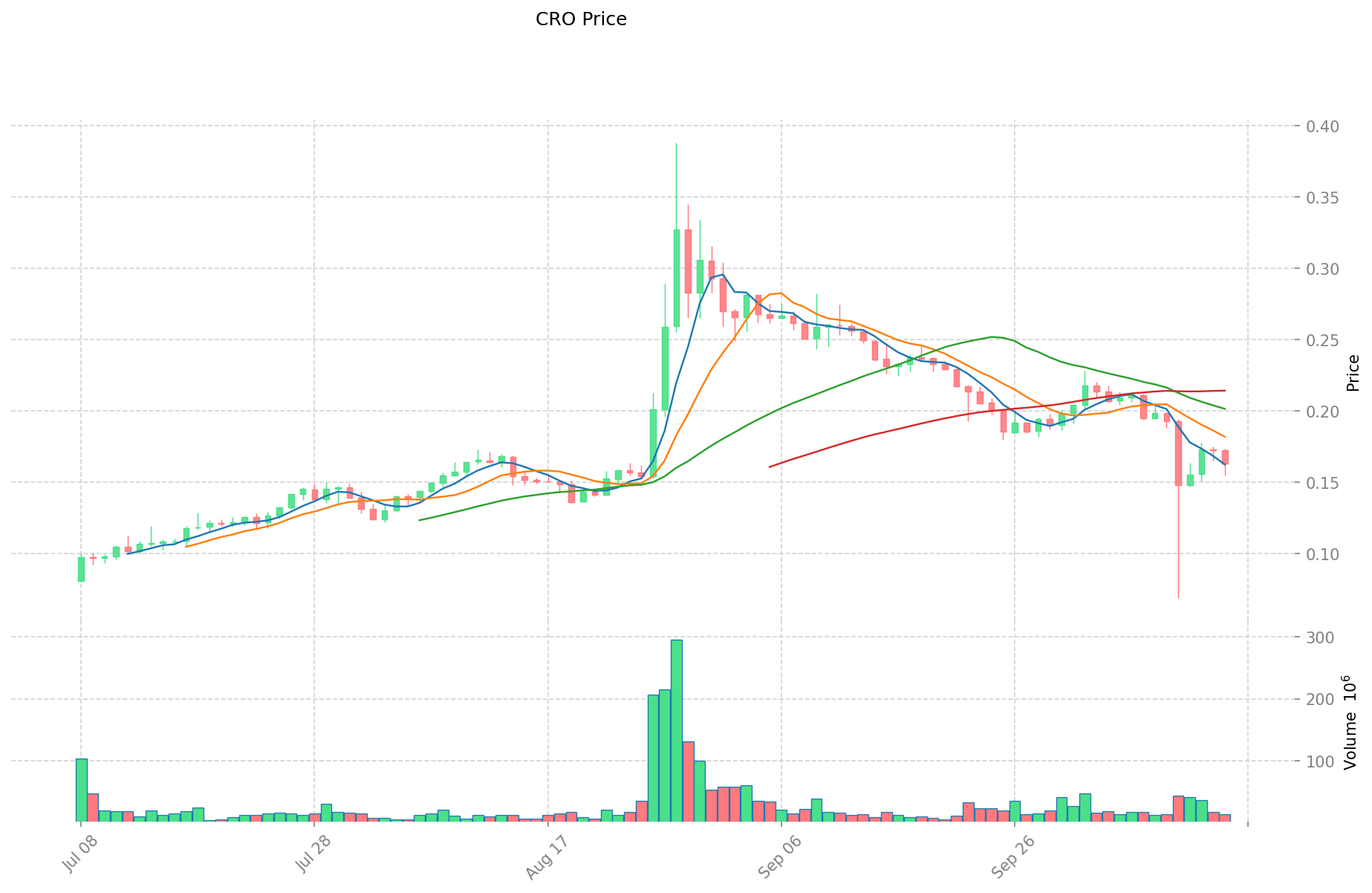ETH ve CRO: Uzun Vadeli Yatırım Potansiyeli Açısından Hangi Kripto Para Birimi Daha Avantajlı?


Giriş: ETH ve CRO Yatırımı Karşılaştırması
Kripto para piyasasında Ethereum ile Cronos karşılaştırması, yatırımcıların sıkça gündeme getirdiği bir başlıktır. Bu iki varlık, yalnızca piyasa değeri sıralaması, kullanım alanları ve fiyat performansı bakımından önemli farklılıklar göstermiyor; aynı zamanda kripto varlık dünyasında birbirinden farklı konumları temsil ediyor.
Ethereum (ETH): 2015 yılında piyasaya sürülmesinden bu yana, akıllı sözleşme ve merkeziyetsiz uygulama yetenekleriyle piyasada güçlü bir kabul gördü.
Cronos (CRO): 2018’de piyasaya çıkan bu varlık, dünya genelinde yüz milyonun üzerinde kullanıcıya hitap eden lider bir blokzincir ekosistemi olarak öne çıkıyor.
Bu makalede, ETH ve CRO’nun yatırım değerleri; geçmiş fiyat hareketleri, arz yapıları, kurumsal benimseme, teknoloji ekosistemleri ve geleceğe dair öngörülerle kapsamlı biçimde karşılaştırılacak. Yatırımcıların en çok merak ettiği şu soruya yanıt aranacak:
"Şu anda hangisi daha iyi bir yatırım fırsatı?" I. Fiyat Geçmişi ve Mevcut Piyasa Durumu
Ethereum (ETH) ve Cronos (CRO) Geçmiş Fiyat Eğilimleri
- 2021: ETH, DeFi ve NFT kullanımındaki artışla beraber 4.946,05 $ ile rekor kırdı.
- 2021: CRO, Crypto.com’un yoğun pazarlama faaliyetleriyle 0,965407 $ ile zirve yaptı.
- Karşılaştırma: 2022 ayı piyasasında ETH zirvesinden yaklaşık 900 $’a, CRO ise tepe seviyesinden 0,06 $’a geriledi.
Mevcut Piyasa Durumu (15 Ekim 2025)
- ETH güncel fiyat: 4.104,85 $
- CRO güncel fiyat: 0,16303 $
- 24 saatlik işlem hacmi: ETH 1,84 Milyar $, CRO 1,92 Milyon $
- Piyasa Duyarlılık Endeksi (Korku & Açgözlülük Endeksi): 34 (Korku)
Canlı fiyatları görmek için tıklayın:
- ETH fiyatını kontrol et: Piyasa Fiyatı
- CRO fiyatını kontrol et: Piyasa Fiyatı


ETH ve CRO Yatırım Değeri Temellerinin Karşılaştırılması
Arz Mekanizmaları (Tokenomik)
- ETH: Sermaye varlığı, tüketilebilir/dönüştürülebilir varlık ve değer saklama/para varlığı olarak süper varlık özellikleri taşır. EIP-1559 sonrası deflasyonist modele geçmiştir.
- CRO: Cronos ağında, işlem ücretleri ve doğrulayıcı ödülleri için kullanılan, ekosistem içi fayda tokenıdır.
- 📌 Tarihsel Eğilim: ETH’nin parasal politika değişimleri, CRO’nun daha merkezi arz yapısına kıyasla fiyat üzerinde daha etkili olmuştur.
Kurumsal Benimseme & Piyasa Uygulamaları
- Kurumsal Varlık: ETH, yatırım fonlarının portföylerinde yer almakla birlikte, 416-966 milyar $’lık değerlemelerle daha güçlü kurumsal ilgiye sahiptir.
- Kurumsal Kullanım: ETH, çok sayıda DeFi protokolü ve kurumsal blokzincir çözümünün temelini oluştururken, CRO’nun işlevi ağırlıklı olarak Crypto.com ekosistemine ve ortaklıklara bağlıdır.
- Düzenleyici Durum: CRO, borsa tokenlerine yönelik düzenleyici netlikten faydalanırken, ETH’nin düzenleyici sınıflandırması daha karmaşıktır.
Teknolojik Gelişim & Ekosistem Oluşumu
- ETH Teknik Gelişim: Kripto ekosisteminde akıllı sözleşmeler ve programlanabilir uygulamalar için öncü katmandır.
- CRO Teknik Büyüme: Cronos ağında, işlem ücretleri ve doğrulayıcı ödülleri için Ethereum’a benzer mekanizmaların geliştirilmesine odaklanır.
- Ekosistem Karşılaştırması: ETH, DeFi, NFT ve kurumsal uygulamalar gibi alanlarda çok daha geniş ve çeşitli bir ekosisteme sahipken; CRO’nun büyümesi, DeFi gelişimi ve Cronos protokolüne likidite çekilmesiyle şekillenir.
Makroekonomik Unsurlar & Piyasa Döngüleri
- Enflasyon Performansı: ETH, kripto ekosisteminde çoklu fayda işleviyle sermaye varlığı rolünü güçlendiriyor.
- Parasal Politika Etkisi: Her iki varlık genel piyasa duyarlılığı ile korelasyon gösteriyor; ETH genellikle piyasada öncü hareketler sergileyerek CRO’nun fiyatını etkiliyor.
- Jeopolitik Etki: CRO’nun değeri, Crypto.com’un iş ortaklıkları ve platform gelişimiyle daha doğrudan ilişkiliyken, ETH’nin küresel kabulü uluslararası piyasa hareketlerine daha geniş maruz kalmasını sağlıyor.
III. 2025-2030 Fiyat Tahmini: ETH ve CRO
Kısa Vadeli Tahmin (2025)
- ETH: Muhafazakâr 2.826,03 $ - 4.095,70 $ | İyimser 4.095,70 $ - 5.856,85 $
- CRO: Muhafazakâr 0,13002 $ - 0,16253 $ | İyimser 0,16253 $ - 0,16741 $
Orta Vadeli Tahmin (2027)
- ETH büyüme dönemine girebilir, tahmini fiyat aralığı 4.242,77 $ - 5.353,97 $
- CRO büyüme dönemine girebilir, tahmini fiyat aralığı 0,17929 $ - 0,25467 $
- Temel itici güçler: Kurumsal sermaye girişi, ETF’ler, ekosistem gelişimi
Uzun Vadeli Tahmin (2030)
- ETH: Temel senaryo 6.251,43 $ - 6.869,70 $ | İyimser senaryo 6.869,70 $ - 8.999,31 $
- CRO: Temel senaryo 0,21004 $ - 0,32314 $ | İyimser senaryo 0,32314 $ - 0,36838 $
Feragatname
ETH:
| Yıl | Tahmini En Yüksek Fiyat | Tahmini Ortalama Fiyat | Tahmini En Düşük Fiyat | Değişim |
|---|---|---|---|---|
| 2025 | 5.856,851 | 4.095,7 | 2.826,033 | 0 |
| 2026 | 5.125,563765 | 4.976,2755 | 4.627,936215 | 21 |
| 2027 | 5.353,97481045 | 5.050,9196325 | 4.242,7724913 | 23 |
| 2028 | 6.294,96113798475 | 5.202,447221475 | 4.109,93330496525 | 26 |
| 2029 | 7.990,69880982452625 | 5.748,704179729875 | 3.851,63180041901625 | 40 |
| 2030 | 8.999,308958158132818 | 6.869,701494777200625 | 6.251,428360247252568 | 67 |
CRO:
| Yıl | Tahmini En Yüksek Fiyat | Tahmini Ortalama Fiyat | Tahmini En Düşük Fiyat | Değişim |
|---|---|---|---|---|
| 2025 | 0,1674059 | 0,16253 | 0,130024 | 0 |
| 2026 | 0,2425028865 | 0,16496795 | 0,0874330135 | 1 |
| 2027 | 0,2546692728125 | 0,20373541825 | 0,17928716806 | 24 |
| 2028 | 0,323175307199062 | 0,22920234553125 | 0,217742228254687 | 40 |
| 2029 | 0,370093027329309 | 0,276188826365156 | 0,254093720255943 | 69 |
| 2030 | 0,368380656605845 | 0,323140926847232 | 0,210041602450701 | 98 |
IV. Yatırım Stratejisi Karşılaştırması: ETH ve CRO
Uzun Vadeli ve Kısa Vadeli Yatırım Stratejileri
- ETH: Ekosistem potansiyeli ve akıllı sözleşme alanındaki liderliğiyle uzun vadeli düşünen yatırımcılara uygundur
- CRO: Borsa tabanlı tokenlar ve platform büyümesiyle ilgilenen yatırımcılar için daha uygundur
Risk Yönetimi ve Portföy Dağılımı
- Temkinli yatırımcılar: ETH %70, CRO %30
- Agresif yatırımcılar: ETH %85, CRO %15
- Koruma araçları: Stablecoin tahsisi, opsiyonlar, döviz çeşitlendirmesi
V. Potansiyel Risk Karşılaştırması
Piyasa Riski
- ETH: Daha geniş piyasa etkisi nedeniyle yüksek volatilite
- CRO: Borsa özelindeki gelişmeler ve Crypto.com performansı tarafından daha fazla etkilenir
Teknik Risk
- ETH: Ölçeklenebilirlik ve ağ istikrarı
- CRO: Merkezileşme endişeleri ve olası güvenlik açıkları
Regülasyon Riski
- Küresel regülasyonlar iki varlık üzerinde de farklı etkiler yaratabilir
VI. Sonuç: Hangisi Daha İyi Bir Yatırım?
📌 Yatırım Değeri Özeti:
- ETH’nin avantajları: Yerleşik ekosistem, kurumsal benimseme, deflasyonist yapı
- CRO’nun avantajları: Güçlü borsa desteği, hızlı büyüme potansiyeli, Crypto.com içinde faydalı kullanım
✅ Yatırım Tavsiyesi:
- Yeni yatırımcılar: Daha geniş piyasa maruziyeti için ETH’ye ağırlık vermek faydalı olabilir
- Deneyimli yatırımcılar: ETH ve CRO’dan dengeli bir portföy oluşturup, risk toleransına göre ayarlayabilirler
- Kurumsal yatırımcılar: ETH’nin yerleşik pozisyonu ve kurumsal kabullenmesi nedeniyle ETH’ye odaklanmalı
⚠️ Risk Uyarısı: Kripto para piyasası oldukça dalgalıdır. Bu makale yatırım tavsiyesi içermemektedir. None
VII. Sıkça Sorulan Sorular
S1: ETH ve CRO’nun yatırım değeri bakımından ana farkları nelerdir? C: ETH, köklü ekosistemi, yaygın kurumsal kabulü ve deflasyonist mekanizmasıyla öne çıkar. CRO ise güçlü borsa desteği, hızlı büyüme potansiyeli ve Crypto.com ekosistemi içindeki faydasıyla dikkat çeker.
S2: ETH ve CRO’nun uzun vadeli fiyat tahminleri nasıl karşılaştırılıyor? C: 2030’da ETH için temel senaryo 6.251,43 $ - 6.869,70 $; iyimser senaryo ise 6.869,70 $ - 8.999,31 $. CRO için temel senaryo 0,21004 $ - 0,32314 $, iyimser senaryo ise 0,32314 $ - 0,36838 $ aralığında öngörülüyor.
S3: ETH ve CRO yatırımlarında başlıca riskler nelerdir? C: ETH, piyasa etkisinin genişliği nedeniyle yüksek volatilite, ölçeklenebilirlik ve ağ istikrarı sorunlarıyla karşılaşabilir. CRO ise borsa tabanlı gelişmelere, Crypto.com’un performansına ve merkezileşme risklerine daha açık durumdadır.
S4: ETH ve CRO’nun kurumsal benimseme ve piyasa uygulamaları nasıl ayrışıyor? C: ETH, güçlü kurumsal ilgiyle çok sayıda DeFi protokolü ve kurumsal blokzincir çözümünün temelini oluştururken; CRO’nun kullanımı daha çok Crypto.com ekosistemi ve stratejik iş birliklerine dayalıdır.
S5: ETH ve CRO için tavsiye edilen varlık dağılımı stratejileri nelerdir? C: Temkinli yatırımcılar için %70 ETH, %30 CRO; agresif yatırımcılar için %85 ETH, %15 CRO önerilmektedir. Bu oranlar bireysel risk toleransına ve piyasa koşullarına göre ayarlanmalıdır.
S6: ETH ve CRO’nun arz mekanizmaları (tokenomik) nasıl farklılık gösteriyor? C: ETH, süper varlık özelliklerine sahip olup EIP-1559 sonrası deflasyonist bir modele geçti. CRO ise Cronos ağında işlem ücretleri ve doğrulayıcı ödülleri için kullanılan bir fayda tokenıdır.
S7: Hangi kripto para yeni yatırımcılar için daha uygun görülüyor? C: Yeni yatırımcılar, köklü ekosistemi ve kurumsal kabullenişi nedeniyle genellikle ETH’ye daha fazla ağırlık vermelidir. Ancak, yatırım kararı kişisel araştırma ve risk analizine dayalı olmalıdır.

bir kripto coin bir ETF aldığında..

2025 COMP Fiyat Tahmini: Compound Finance Token, DeFi Pazarında Yeni Zirvelere Ulaşabilir mi?

Gelato (GEL) iyi bir yatırım mı?: Bu yükselen DeFi protokolünün potansiyeli ve riskleri üzerine analiz

Uniswap (UNI) iyi bir yatırım mı?: Lider DEX token’ının potansiyeli ve risklerinin değerlendirilmesi

Livepeer (LPT) iyi bir yatırım mı?: Bu merkeziyetsiz video yayın protokolünün potansiyelini analiz ediyoruz

BLOCKST vs ETC: Kurumsal Veri Yönetiminde Blockchain Depolama Çözümlerinin Karşılaştırılması

Flash Kredileri Anlamak: DeFi'de Teminatsız Borçlanma Üzerine Kapsamlı Bir Rehber

MetaMask ile ERC20 Token Yönetimi: Bir Rehber

Dijital Varlıkların Güvenli Saklanması: Kripto Saklama Çözümlerinde En İyi Uygulamalar

Blockchain’de Çifte Harcama Nedir? Kapsamlı Bir İnceleme

Dijital varlık alım satımında üçlü tepe formasyonlarının anlaşılması





